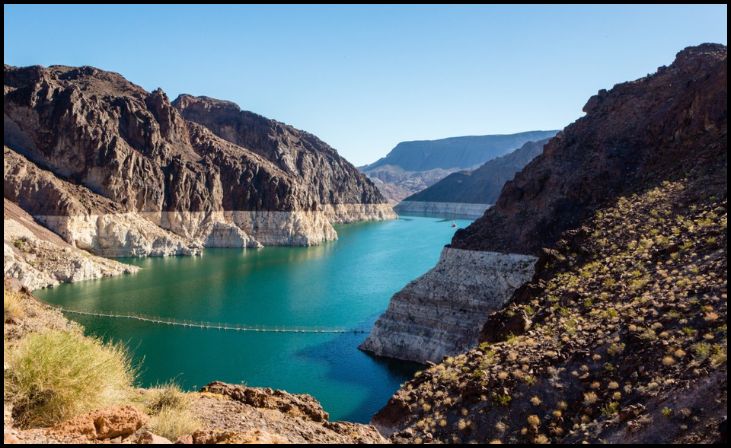Lake Mead, the largest reservoir in the United States, has experienced dramatic changes in water levels in recent years. These fluctuations are unprecedented in modern history, driven by a combination of prolonged drought, climate change, and increased water consumption in the region. The consequences of these changes are far-reaching, impacting water supply, power generation, and the environment. This article explores the key factors contributing to the rapid changes in Lake Mead’s water levels, examining the implications for millions of people who rely on this crucial water source.
Prolonged Drought Conditions
Prolonged drought conditions in the Southwestern United States have significantly contributed to the declining water levels in Lake Mead. Over the past two decades, reduced precipitation and increased temperatures have resulted in less runoff from the Colorado River Basin, which feeds the reservoir. The persistent drought has created a severe imbalance between water inflow and outflow, exacerbating the depletion of this vital water source.
Climate Change Impact

Climate change is amplifying the drought conditions affecting Lake Mead. Rising temperatures lead to increased evaporation rates, further reducing the water levels. Additionally, changes in precipitation patterns have resulted in more frequent and intense droughts. The interplay of these factors has accelerated the decline of Lake Mead’s water levels, highlighting the need for comprehensive climate mitigation and adaptation strategies to safeguard water resources.
Increased Water Consumption
The growing population and agricultural demands in the Southwestern United States have escalated water consumption from Lake Mead. Urban expansion and intensive farming practices require substantial water withdrawals, contributing to the reservoir’s rapid depletion. Efforts to manage and reduce water usage are critical to ensuring the long-term sustainability of Lake Mead and the communities it serves.
Water Management Policies

Water management policies and agreements among the states relying on the Colorado River Basin play a crucial role in the dynamics of Lake Mead’s water levels. Policies like the Colorado River Compact, which allocates water rights, need to be re-evaluated and updated to reflect current and future water availability. Collaborative interstate agreements are essential to balance water use and preserve Lake Mead’s capacity.
Impact on Hydroelectric Power
Lake Mead is a critical source of hydroelectric power for the region, with the Hoover Dam generating electricity for millions of residents. Declining water levels reduce the dam’s capacity to produce power, posing challenges for energy reliability and increasing costs. Ensuring adequate water levels in Lake Mead is vital for maintaining hydroelectric power generation and supporting the region’s energy needs.
Environmental Consequences

The rapid changes in Lake Mead’s water levels have profound environmental impacts. Lower water levels disrupt aquatic ecosystems, threaten wildlife habitats, and reduce water quality. The drying shoreline also exposes previously submerged toxic substances, posing additional environmental hazards. Protecting Lake Mead is crucial for preserving the ecological balance and health of the region.
Economic Implications
The fluctuations in Lake Mead’s water levels have significant economic implications. The reservoir supports tourism, recreation, and agriculture, all of which are vital to the local economy. Lower water levels can lead to reduced recreational opportunities, impacting tourism revenue. Additionally, agricultural productivity can suffer, affecting food supply and prices. Addressing water level changes is essential for economic stability.
Conclusion
The unprecedented changes in Lake Mead’s water levels are a stark reminder of the challenges posed by climate change, population growth, and unsustainable water use. Proactive measures, including enhanced water management policies, conservation efforts, and climate adaptation strategies, are crucial to mitigating these impacts. Ensuring the sustainability of Lake Mead is not only vital for the millions of people who depend on it but also for the broader environmental and economic health of the region. By addressing these issues collaboratively, we can safeguard this essential resource for future generations.

